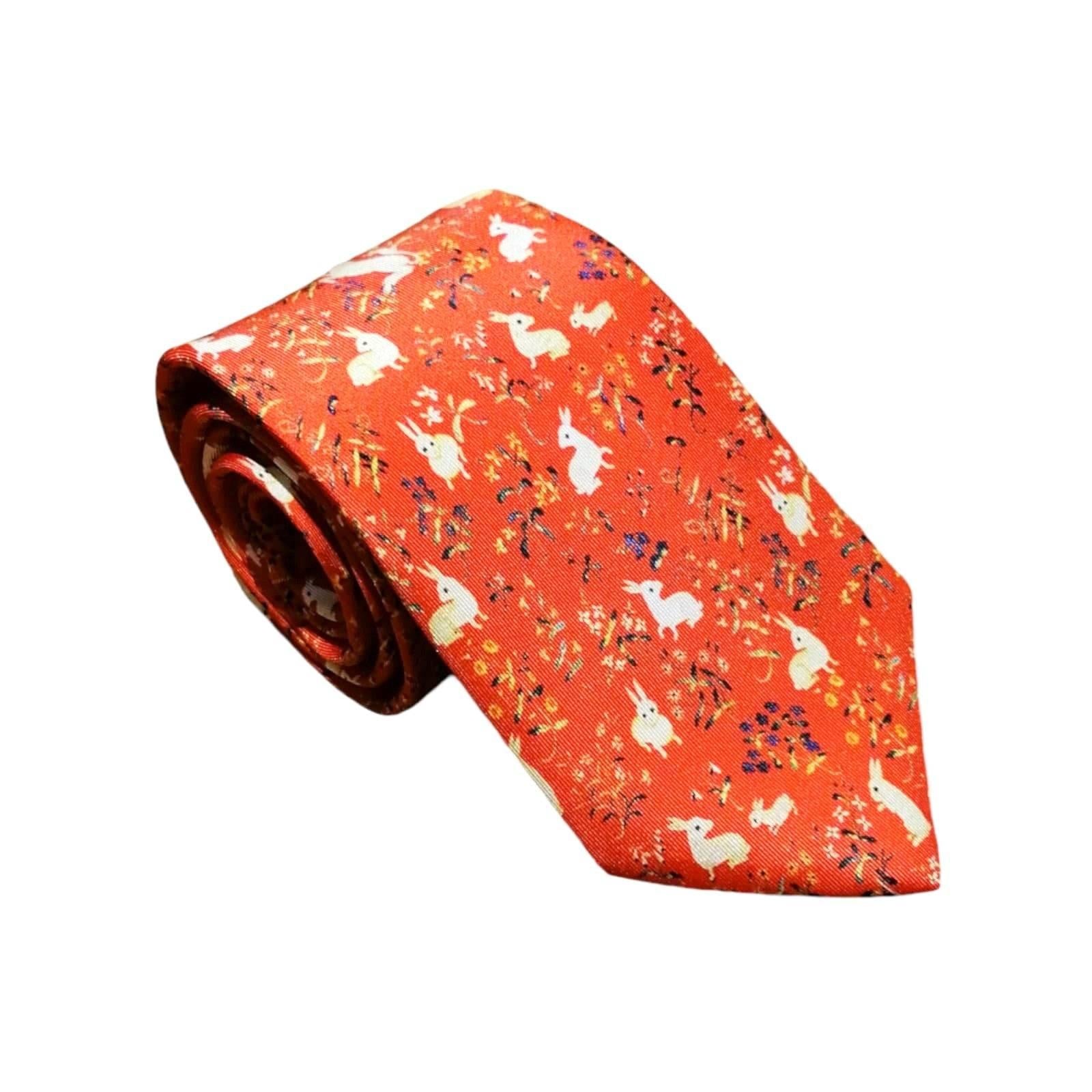Tapestry of the Lady and the Red Unicorn
Availability: 1 remaining
Estimated delivery: 7 may*
The “Made in Lyon and its surroundings” label promotes products manufactured within a 20 km radius, reflecting traditional Lyonnais know-how.
Technical data
| Color | Orange-red background, ecru pattern |
| Composition | 100% Silk |
| Weaving | Twill (opaque, thick) |
| Made in | Lyon, France |
| Gender | Man |
Since Aristotle's treatise "On the Soul" (384 - 322 BC), human beings have had five senses. However, The Lady and the Unicorn, woven around 1500 and exhibited today at the Cluny Museum, evokes the idea of a sixth sense. This sixth tapestry, that of the sixth sense, can only be interpreted by deduction from the hypothesis of the five senses. We can read, "My only desire" at the top of the blue tent.
Experts wonder: does the lady take or leave the jewels? If she puts them in the box, her gesture signifies a renunciation of the five senses. Down with the sins of lust! By abandoning her necklace, the lady rids herself of the temptations of flesh and wealth that would arise from poorly controlled senses. Her "only desire" would be that of wisdom and a pure heart. According to legend, the unicorn, known for its virtue, can only be captured if it is attracted to a young virgin girl.
If, on the contrary, the lady seizes the jewel, she celebrates sensual pleasures. Adorning herself with the necklace, the woman indulges in earthly pleasures. She chooses the experience of her own "desire" where her physical senses constitute a key to ecstatic love. Here, the fairy animal also and above all recalls sexual appetite, with its horn, a phallic symbol by essence.

The Lady and the Unicorn - "My only desire",
between 1484 and 1538

Availability: 1 remaining
Estimated delivery: 7 may*
































